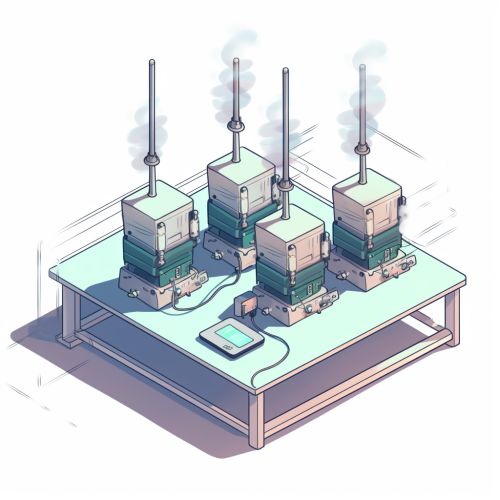Half-Duplex Transmission
Introduction
In the field of telecommunications, half-duplex (HDX) is a type of communication system where data transmission can occur in two directions, but not simultaneously. Instead, the system operates by switching between transmitting and receiving modes. This contrasts with full-duplex (FDX) transmission, where data can be sent and received simultaneously, and simplex transmission, where data can only flow in one direction.


Overview
Half-duplex systems are commonly used in scenarios where simultaneous two-way communication is not necessary, or where it is more cost-effective to use a single communication channel rather than two separate channels as in full-duplex systems. Examples of half-duplex systems include walkie-talkies, CB radios, and certain types of data networks.
Operation
In a half-duplex system, only one party can transmit at a time. The other party must wait until the transmission is complete before responding. This is often achieved through the use of a push-to-talk button, which switches the device between receiving and transmitting modes.
Advantages and Disadvantages
Half-duplex systems have certain advantages and disadvantages compared to full-duplex systems. One advantage is that they require only a single communication channel, which can make them more cost-effective in certain scenarios. They also have less potential for interference, as there is no risk of transmitted and received signals overlapping.
On the downside, half-duplex systems can be less efficient than full-duplex systems, as they cannot transmit and receive data simultaneously. This can lead to delays in communication, particularly in scenarios where rapid back-and-forth communication is required.
Applications
Half-duplex systems are used in a variety of applications. Some examples include:
- Walkie-talkies: These devices use half-duplex communication, allowing only one person to speak at a time. The other party must wait until the speaker has finished before responding.
- CB radios: Like walkie-talkies, CB radios operate on a half-duplex basis. This allows users to take turns speaking and listening.
- Certain types of data networks: Some data networks use half-duplex communication to reduce the risk of data collisions. An example is the original Ethernet standard, which used a method called Carrier Sense Multiple Access with Collision Detection (CSMA/CD) to manage data transmission.
